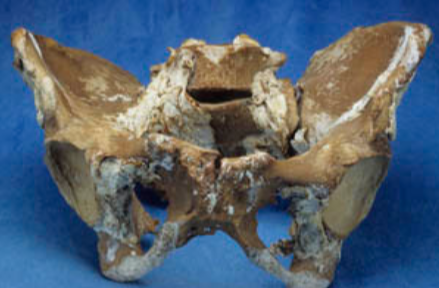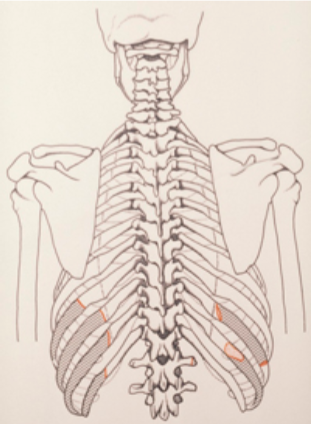5.13: A Modern Forensic Case File
- Page ID
- 62269
\( \newcommand{\vecs}[1]{\overset { \scriptstyle \rightharpoonup} {\mathbf{#1}} } \)
\( \newcommand{\vecd}[1]{\overset{-\!-\!\rightharpoonup}{\vphantom{a}\smash {#1}}} \)
\( \newcommand{\id}{\mathrm{id}}\) \( \newcommand{\Span}{\mathrm{span}}\)
( \newcommand{\kernel}{\mathrm{null}\,}\) \( \newcommand{\range}{\mathrm{range}\,}\)
\( \newcommand{\RealPart}{\mathrm{Re}}\) \( \newcommand{\ImaginaryPart}{\mathrm{Im}}\)
\( \newcommand{\Argument}{\mathrm{Arg}}\) \( \newcommand{\norm}[1]{\| #1 \|}\)
\( \newcommand{\inner}[2]{\langle #1, #2 \rangle}\)
\( \newcommand{\Span}{\mathrm{span}}\)
\( \newcommand{\id}{\mathrm{id}}\)
\( \newcommand{\Span}{\mathrm{span}}\)
\( \newcommand{\kernel}{\mathrm{null}\,}\)
\( \newcommand{\range}{\mathrm{range}\,}\)
\( \newcommand{\RealPart}{\mathrm{Re}}\)
\( \newcommand{\ImaginaryPart}{\mathrm{Im}}\)
\( \newcommand{\Argument}{\mathrm{Arg}}\)
\( \newcommand{\norm}[1]{\| #1 \|}\)
\( \newcommand{\inner}[2]{\langle #1, #2 \rangle}\)
\( \newcommand{\Span}{\mathrm{span}}\) \( \newcommand{\AA}{\unicode[.8,0]{x212B}}\)
\( \newcommand{\vectorA}[1]{\vec{#1}} % arrow\)
\( \newcommand{\vectorAt}[1]{\vec{\text{#1}}} % arrow\)
\( \newcommand{\vectorB}[1]{\overset { \scriptstyle \rightharpoonup} {\mathbf{#1}} } \)
\( \newcommand{\vectorC}[1]{\textbf{#1}} \)
\( \newcommand{\vectorD}[1]{\overrightarrow{#1}} \)
\( \newcommand{\vectorDt}[1]{\overrightarrow{\text{#1}}} \)
\( \newcommand{\vectE}[1]{\overset{-\!-\!\rightharpoonup}{\vphantom{a}\smash{\mathbf {#1}}}} \)
\( \newcommand{\vecs}[1]{\overset { \scriptstyle \rightharpoonup} {\mathbf{#1}} } \)
\( \newcommand{\vecd}[1]{\overset{-\!-\!\rightharpoonup}{\vphantom{a}\smash {#1}}} \)
Consider the clues — cuts, broken bones, charring. This modern forensic case spotlights just how much a skeleton can reveal. The remains can tell us not only about the deceased person in life, but also about events prior to and surrounding death and burial.

Forensic Case SI93-03
This man's remains were buried without autopsy after a house fire because his death was considered accidental. Evidence obtained years later led to exhumation of the body to determine whether the death was a homicide. Was the dwelling set on fire to disguise a murder?

Skeletal Evidence
In addition to numerous healed bone injuries, at least seven unhealed cuts can be identified on this individual. It would have taken a large, sharp knife to completely slice through the bone. Postmortem changes in the bones indicate that the body was burned and buried without embalming.
The cranium was sectioned by a medical examiner, who worked with a forensic anthropologist after the remains were exhumed. The light color of the sawed edge of the cranial vault indicates that this cut occurred during the recent autopsy.

- Sex: Male
- Large brow ridges and mastoid processes, square chin; narrow sciatic notch and sub-pubic angle.
- Age at death: 40-45 years
- Height: about 5 ft. 9 in.
- Ancestry: European
- long, narrow face, narrow nasal chamber and interorbital distance; palate and mandible are V-shaped
- Trauma: cause of death - multiple cuts and stab wounds
- Cuts, most concentrated on the ribs, show no remodeling (healing). Similarities in bone color between the cut edge and outer bone show that the cuts did not occur postmortem. Six lower ribs on both the left and right sides have been completely severed by a sharp, bladed implement. The lower right ribs were cut through in three identifiable locations, by at least three separate cuts. The tip of one of the vertebrae (right lower transverse process of the first lumbar vertebra) was also severed.
Antemortem Clues
Healed fractures of the right tibia and fibula, nasal bones and maxillae, and pelvis (with two fused lobes) are consistent with injuries from a car accident. Several teeth were also knocked out, as pictured below.


Perimortem Clues

Charring is evident on the top of the cranium and portions of the ankle and elbow bones — body parts least protected by soft tissues. How much and where the skeleton is burned gives information about the circumstances of death and the body's position.
Postmortem Clues
Erosion of bone can occur even in a coffin. The innominates and sacrum show erosion on the surface in contact with the bottom of the coffin. The pattern of the erosion indicates the body's position in the grave.

